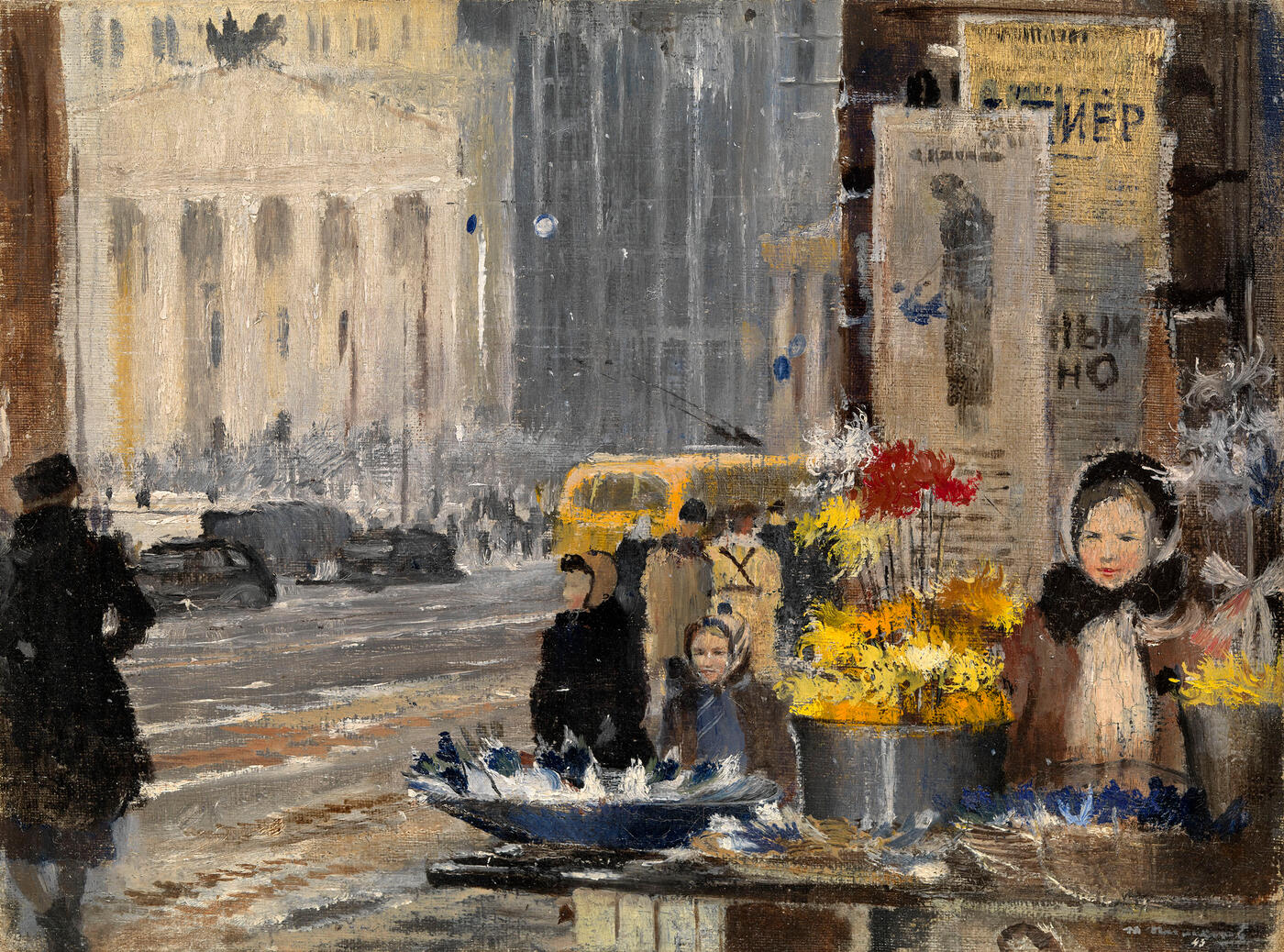MacDougall's Russian Art Auctions 27-30 May 2012
27 May 2012

* 43. PIMENOV, YURI (1903-1977)
Paper Flowers and Snow, signed and dated 1945.
Oil on canvas, 27 by 35.5 cm.
140,000–250,000 GBP
Provenance: A gift from the artist to the family of F. Bogorodsky.
Thence by descent.
Acquired from the above.
Private collection, Europe.
Authenticity of the work has been confirmed by Tatiana Pimenova, the artist’s daughter.
Yuri Pimenov’s intimate, lyrical work Paper Flowers and Snow is one of his “Moscow motifs” – the artist’s most recognisable and best-loved images. Its genre defies definition. A city sketch, still life, landscape – in this marvellous, delicately-coloured work, everything is indissolubly fused.
Theatre Square. Heavy snowfall is turning everything into a white mirage. Up against a poster-covered wall is a flower-stall, with beautiful, bright paper flowers. Next to them we see a young sales-girl, the shawl tied over her hat forming a soft oval round her head, and a little girl hurrying along the pavement. In the distance cars and a trolleybus pass by and pedestrians go about their business. This picture is a continuation of Pimenov’s theme of street-side flower sellers, which he first drew upon in a work of 1944. Paper Flowers and Snow, painted a year later, when forthcoming victory was already on the horizon, was full of a sincere optimism. The snow will pass, the sun will come out, spring will come and paper flowers will be replaced by real ones.
These little scenes from Moscow life provided the inspiration for Pimenov’s best paintings from the second half of the 1930s until the early 1950s. Through the features of the city, its main squares and thoroughfares, glimpsed as if by chance, tangentially, the life of the capital and living signs of the times emerge. As the years go by, the protagonists in Pimenov’s works are more and more often depicted surrounded
by flowers. This is testament not only to the artist’s characteristic love of painting flowers, “the life of things” and the still life element constantly present in his urban works, but also to his touching attitude towards his protagonists whose simple everyday occupations and employments form the life of any
town. A young man crossing Sverdlovsk Square carries a basket of chrysanthemums on his shoulder (In the Street, 1940), The Flower Seller (1944) stands with her bunches of cornflowers by the railings of the
Dynamo stadium. Pimenov did not abandon his lyrical theme in his later work: in 1958 transforming the meeting in By the Flower Kiosk into a great poetic image of Moscow, and The Lonely Flower Seller, painted in Venice in the same year, into his best memory of the city.
Notes on symbols:
* Indicates 5% Import Duty Charge applies.
Ω Indicates 20% Import Duty Charge applies.
§ Indicates Artist's Resale Right applies.
† Indicates Standard VAT scheme applies, and the rate of 20% VAT will be charged on both hammer price and premium.